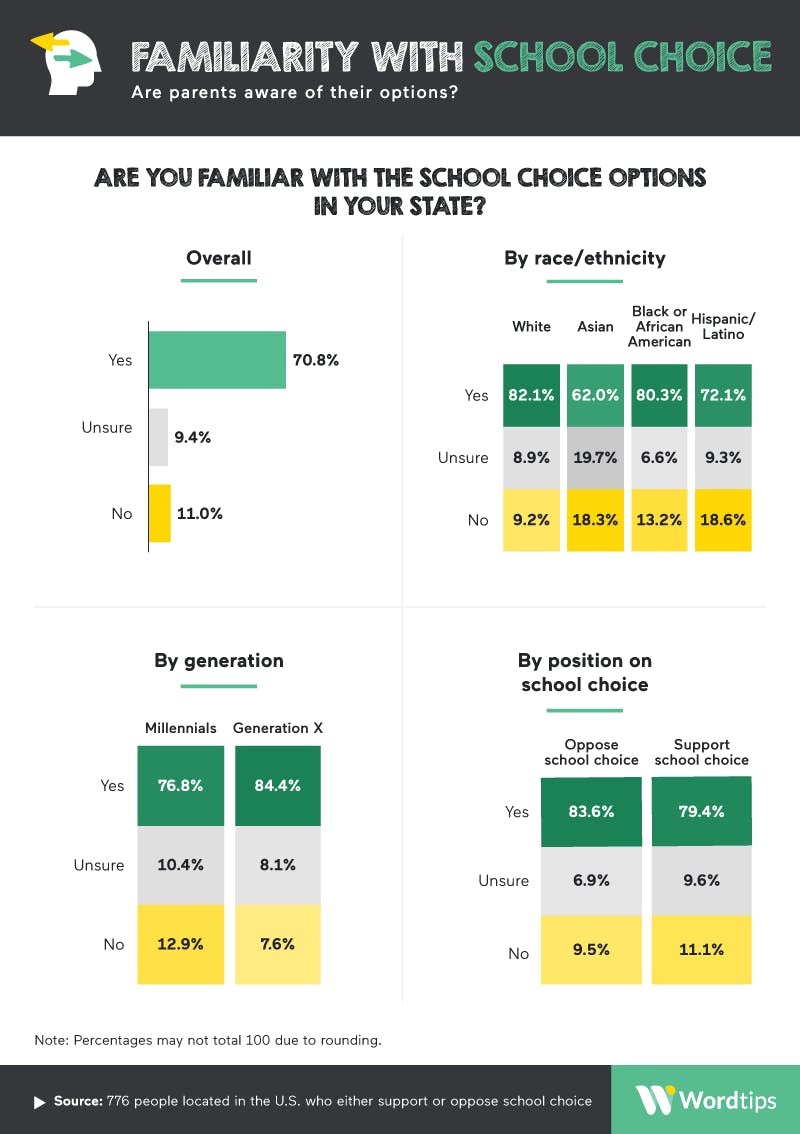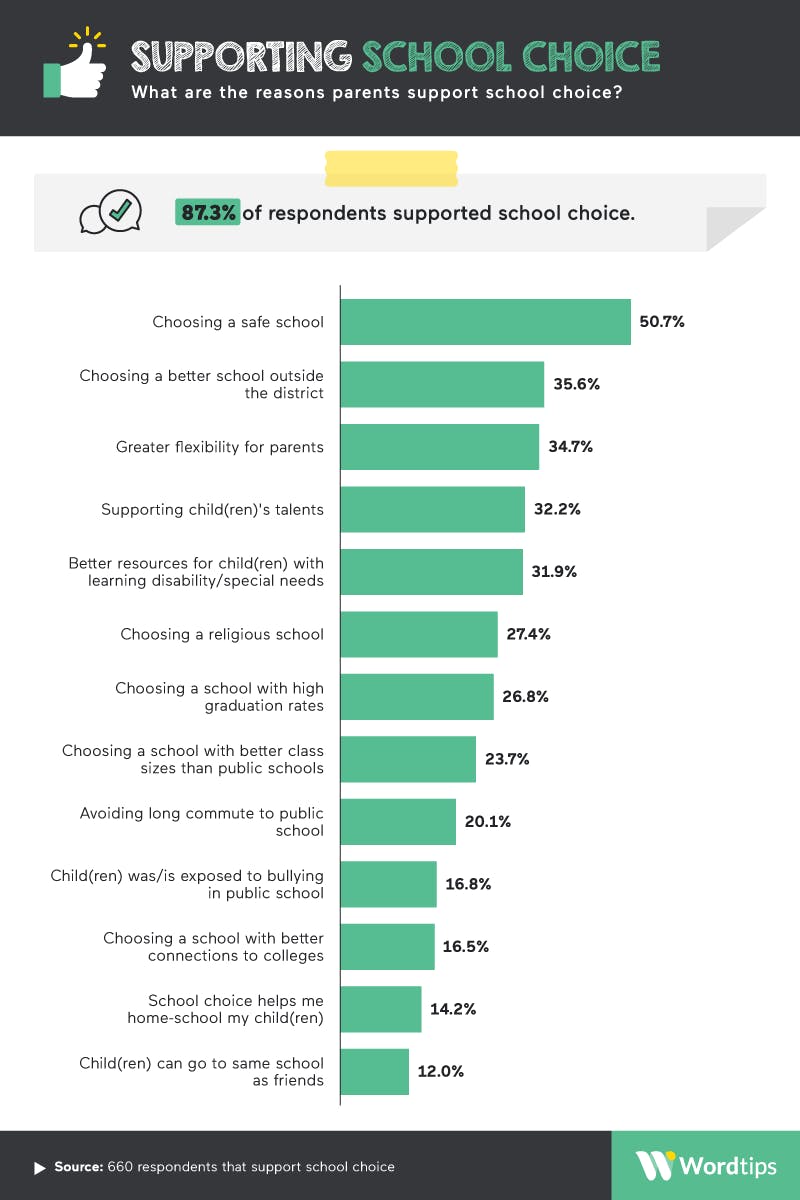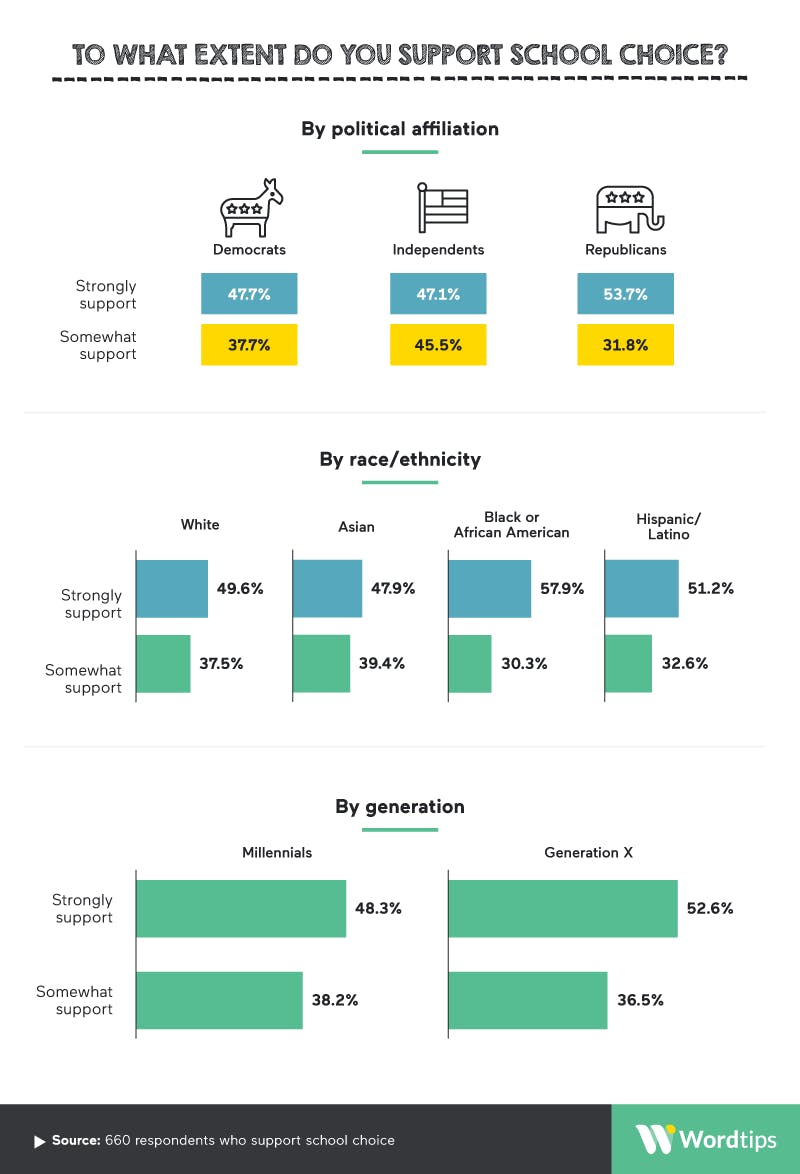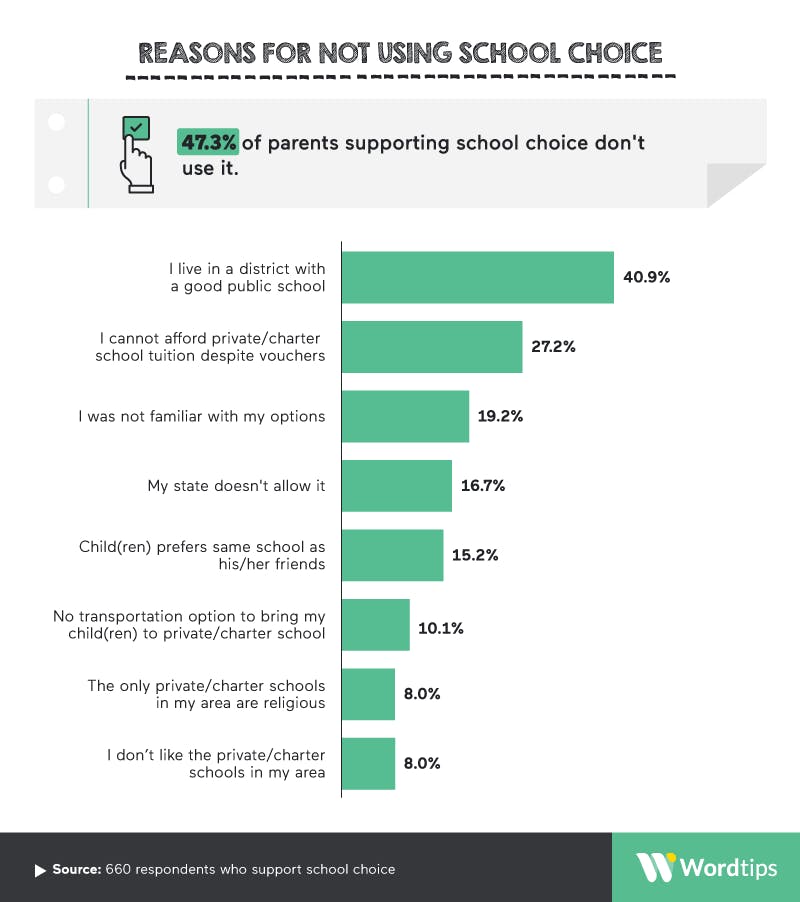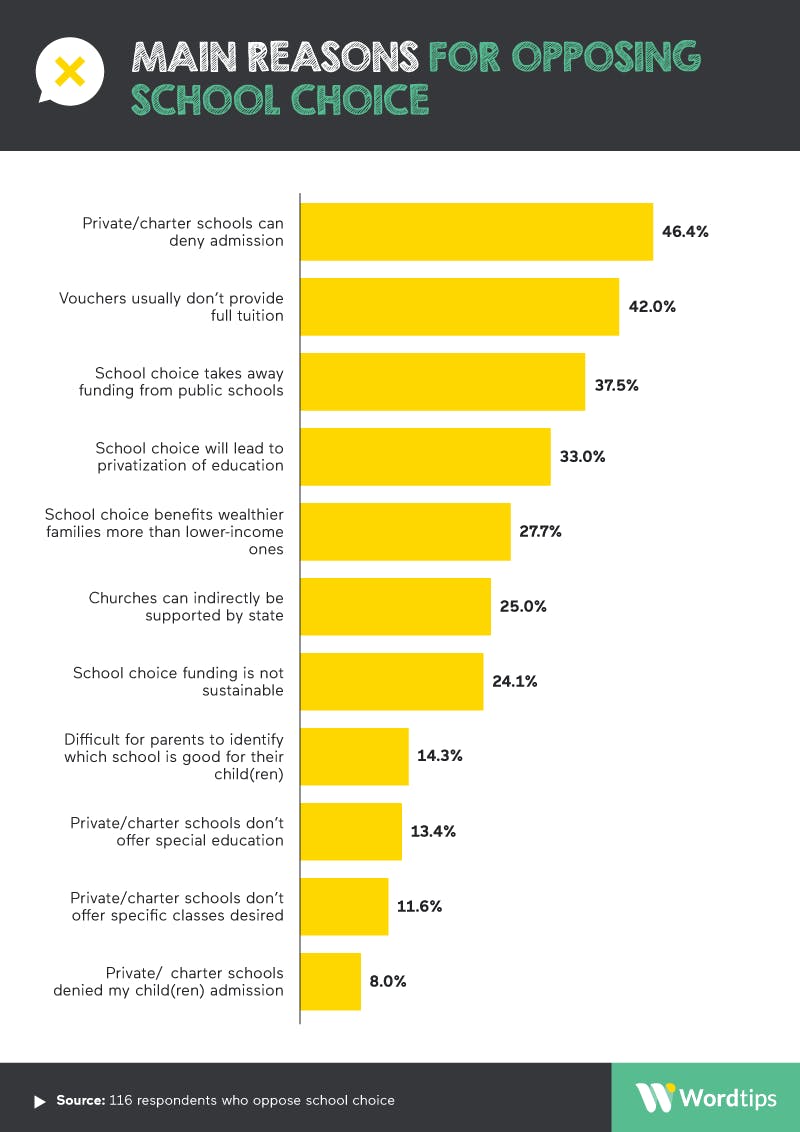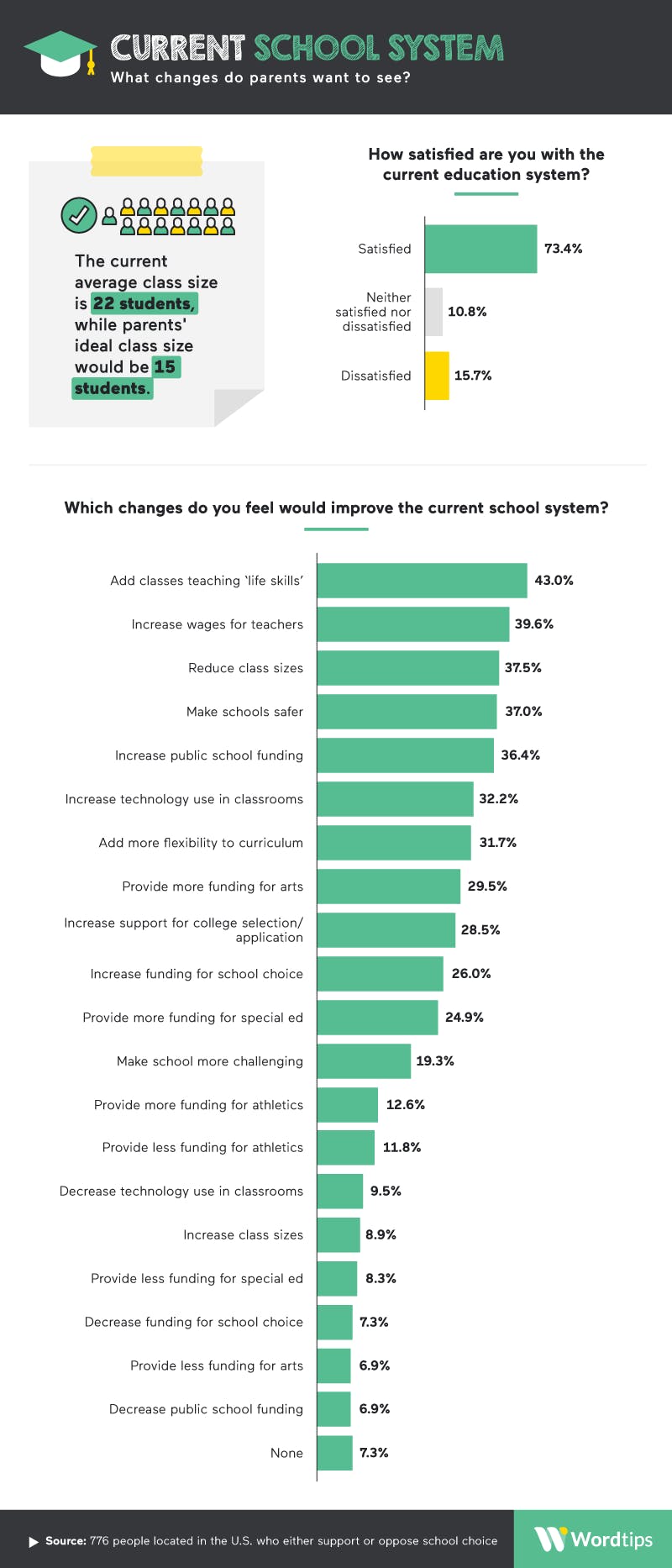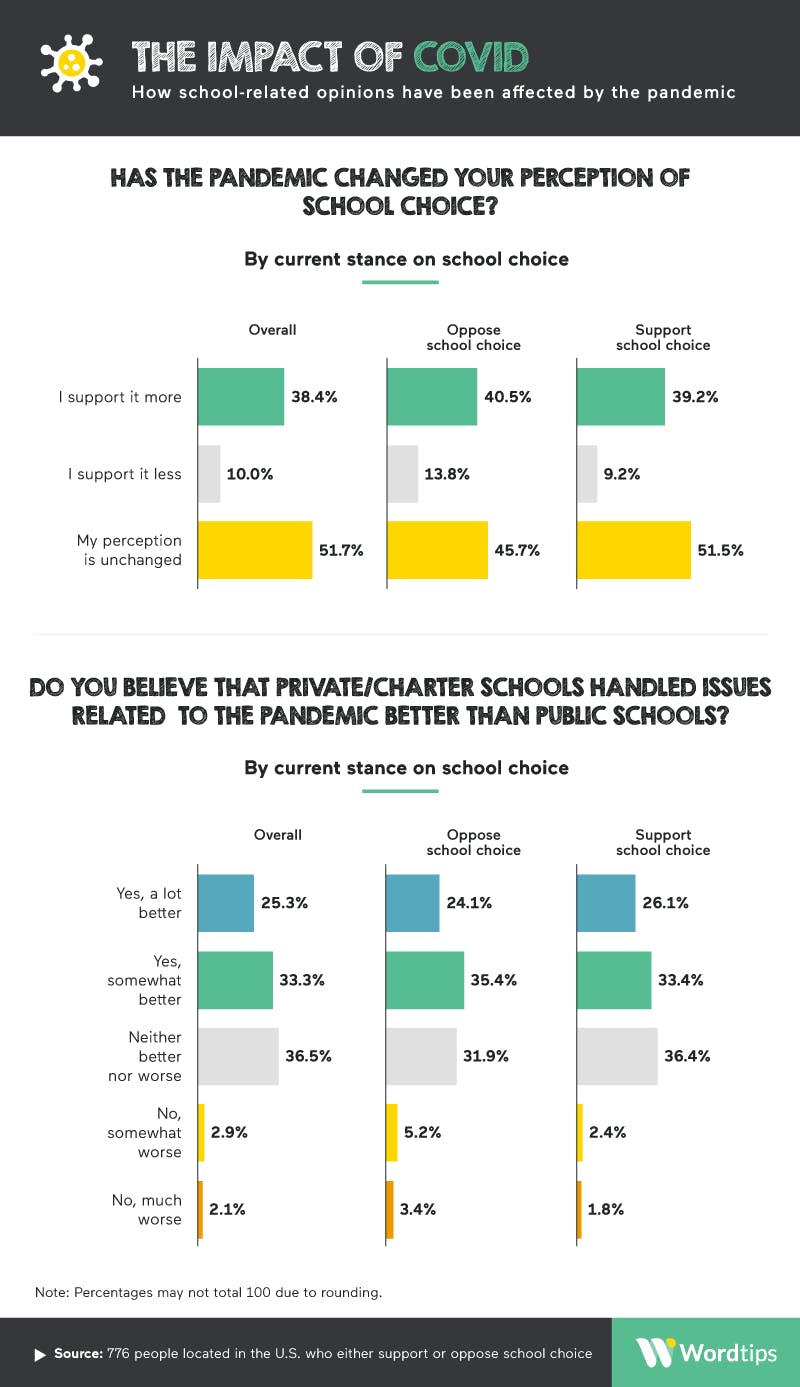School Choice
Last update: 4/21/2023

Changes in education; a closer look at parents’ perception of school choice
Schools, teachers, and students have been presented with extraordinary challenges since the outbreak of the pandemic. Safety, education, and well-being have all been put at risk while undergoing a hyperspeed-style evolution. For many, this has brought up the question of school choice, or ultimately whether a parent should have a say in where their child can attend school.
While COVID-19 may have brought this question to the forefront, it is perhaps one that merited discussion well beforehand. School choice has the power to change the face of education, though it also comes with its own drawbacks. To gauge how the country is now understanding school choice, we presented them with the conversation. Nearly 800 people of all backgrounds participated in the conversation. If you’re unfamiliar with school choice or want to see if your own opinions align with those of particular American demographics, keep scrolling. It’s certainly an important discussion to be having right now.
Defining School Choice
When we say “school choice,” it is not as self-explanatory as it sounds. School choice technically refers to a program or policy wherein a student is legally permitted to attend a school other than the one within their district’s provided public school. This means the student could theoretically attend a public school in another area or perhaps a private or charter school.
Understanding School Choice
Beyond the technical definition, we wanted to get a pulse check on general understanding. Did most respondents know what their state’s options were with regards to school choice? How familiar were they with those options? Responses were then broken down by demographic.
Respondents considered themselves to be generally familiar with the concept of school choice. Only 11.1% were unfamiliar, or perhaps only 11.1% were willing to admit their lack of understanding. When looking at ethnicity, white respondents were the most familiar with the options available to them. School choice has long been considered a key issue to fixing minority access to quality education, which makes each minority’s relative lack of understanding here an alarming concern. Refusal to offer school choice is often seen as a way to prevent those in poorer communities from obtaining access to well-funded education.
Those who actively opposed school choice, however, were also more likely to consider themselves knowledgeable on the topic. Though this study will dive into the reasons for opposition, this statistic does suggest that supporting school choice may not be as obvious of a choice as many consider it to be. Perhaps there is indeed more to the story.
Champions of School Choice
The next part of our study speaks only to the 612 respondents that said they supported school choice. This subgroup was asked to select their reasons as well as the extent to which they felt their support. Answers were also divided by political affiliation, race/ethnicity, and generation.
It’s important to note that this subgroup of respondents actually represents the vast majority. Eighty-seven percent of the people we spoke to said they fully supported school choice programs and policies. The concept of inclusivity was certainly at the forefront of this opinion: 65.3% of pro-school choice respondents believed that it makes private and charter schools more inclusive environments. More than half also said it provided access to safer schools.
Republicans were the most likely political party to demonstrate support for school choice, as were African American respondents. Though school choice represents a top priority for a relatively small percentage of voters, being pro-school choice has been something that repeatedly appears on the Republican docket and presented at many RNCs. This was the only political party surveyed wherein more than half agreed that they are in strong support of school choice.
Opting Out of School Choice
Even those in support of school choice often opted out. This next piece of data shows the top reasons for doing so.
A bit over half (52.7%) of parents who support school choice actively use the option. When the group who wasn’t using school choice was asked why, their top reason was that they lived in a district that already had a good public school. While this statistic is somewhat reassuring, an additional 27.2% of parents said that even with school choice and a voucher, they were still unable to afford tuition at a different school. This suggests an inherent flaw or limitation of the school choice system, which is that the private or superior education isn’t necessarily affordable, even when vouchers are provided. Then there’s also the commute-related costs (both financial and time-based) that a parent must consider to drive their student outside of the district.
Reasons for Refusal
Though only 116 respondents actively opposed school choice, we wanted to give this group a chance to explain why. After all, being in the majority doesn’t necessarily correlate with the best decisions. This group’s top reasons for opposition are listed below.
The number one reason parents opposed school choice was the idea that students can be denied. Perhaps their own schools have failed their children to the point where they fear a lack of admission to a better school. Many parents also echoed an earlier concern that vouchers wouldn’t sufficiently cover the cost of tuition at the new school. Both of these concerns (which would take both finances and student caliber away from the school) would ultimately make their child’s current school even worse. Parents were keen on this concept, as 37.5% of those who opposed school choice argued the program would ultimately take funding away from public schools.
There were also many parents that feared a hidden agenda behind school choice. Forty-six percent feared that school choice was actually a way for religious institutions to receive indirect and secret funding. Exactly a quarter said that churches specifically would indirectly receive funding from the state this way – a direct violation of the concept of separation between church and state. Though these reasons were shared by the minority of participants in the study, they are certainly compelling, and may suggest that self-reported familiarity with the concept of school choice may have been overestimated.
Most Desired Changes in Education
With all respondents back in the questioning poole, this next piece of our study asked everyone to consider the changes they would most like to see to the current educational system.
While many supported additional funding for school choice, it certainly wasn’t the top priority when all possible changes were considered. Respondents were much more likely to prioritize things like life skills being taught in schools (43%), higher wages for teachers (39.6%), and smaller class sizes (37.5%). By comparison, only 26% said increased funding for school choice was a desire of theirs.
In spite of the many changes respondents hoped for, most felt overall satisfied with the current education system. Nearly three-quarters considered themselves “satisfied” with the way it existed. In our current state, today’s average class size consists of 22 students. Parents, however, were hoping this number would drop to around 15. Not only do students from smaller class sizes tend to perform better on tests and across all subjects, smaller class sizes might also help recruit better teachers. This request among parents appears to be a very well-founded one and, perhaps with the confusion surrounding school choice, a well-founded prioritization as well.
COVID’s Influence on School Choice
COVID-19 appears to have its hands in seemingly every aspect of society, and school choice is no exception. Our study wraps up with a look at how the pandemic has influenced opinions and support for school choice.
COVID-19 has overall influenced people to be more supportive of school choice. Though most people’s opinions were unchanged, those who did experience a change of heart were more often in the pro-choice direction of things. Among those who previously opposed school choice, this change of heart was even more common.
While the ability to choose schools based on health concerns was likely a factor here, many were also impressed by how private schools handled the pandemic. Twenty-five percent of respondents agreed that private and charter schools had superior pandemic responses, which ultimately made them more supportive of school choice. Another 33.9% said private school responses were at least “somewhat better” than those of public schools.
School Choice Reflections
Influenced at least partially by the pandemic, the vast majority of parents today stand in support of school choice, or the ability to send their children to schools outside of their own district. That said, the choice didn’t come easily for many nor was it always accurately understood in the first place. Many demonstrated a lack of familiarity, as well as concerns about the ability of school choice to really solve educational problems.
Having a little help to better understand these problems is always crucial. Having a little help to understand these problems better is always crucial. Hopefully, this study provided that context. One of the best (and free) ways to continue valuable education in your own home or spare time is by playing scrabble or uncovering grammar rules with relevant examples. It is a fun way for everyone to spend time while also using their mind. If you ever need help with that particular type of education, head to Word Finder. We can help you whenever you’re stuck in your game or figuring out parts of speech, transition words, and active vs. passive voice.
Methodology
This study uses data from a survey of 776 people located in the U.S. who either support or oppose school choice. Survey respondents were gathered through the Amazon Mechanical Turk survey platform where they were presented with a series of questions, including attention-check and disqualification questions. 47.3% of respondents identified as male, while 52.7% identified as female. The average age of respondents was 39 years old with a standard deviation of nine years. 87.2% of respondents supported school choice, while 12,8% opposed it. Any participant incorrectly answering any attention check-question had their answers disqualified.
Please note that survey responses are self-reported and are subject to issues, such as exaggeration, recency bias, and telescoping.
Fair Use Statement
School choice is clearly a loaded issue that often lacks a comprehensive understanding. If you felt you learned something about the topic here and want to share that information with others, you are welcome to do so. Just be sure your purposes are noncommercial and that you link back to this page.

